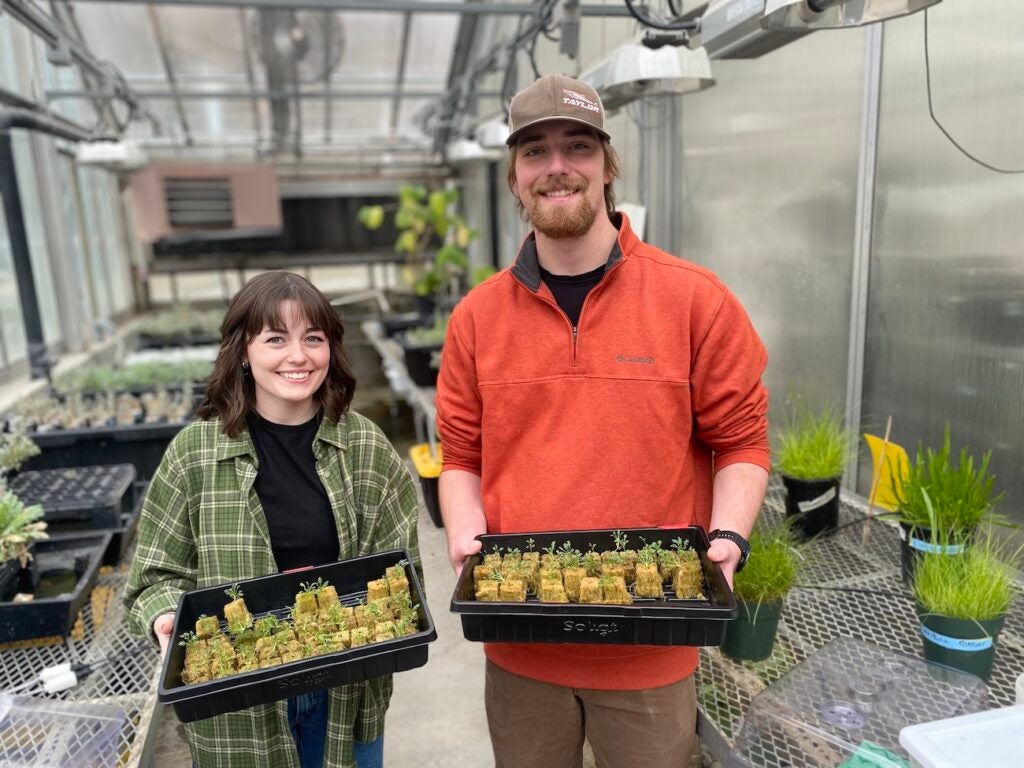
Boise State University biologists are working with federal agencies to develop innovative ways to grow native seeds and restore one of the world’s most threatened ecosystems: the sagebrush steppe.
Across the U.S., nearly half of our ecosystems face collapse, and over one-third of plant species are at risk of extinction. These losses threaten everything from wildlife and food security to human health.
The sagebrush steppe—vital to western livelihoods and wildlife—is disappearing at an unprecedented rate because of fire, drought, and invasive species. With more than 350 species of plants and animals listed as threatened and 1,800 species of plants considered rare, restoring this landscape is an urgent task. Unfortunately, restoration efforts are hindered by a lack of native seeds.
Our solution
We are using biotechnology to produce seeds for threatened plants—starting with slickspot peppergrass, a federally listed mustard native to Idaho. By combining light treatments used in horticulture and agriculture with genetically-informed breeding, we can grow high-quality seeds, sustaining resilient populations in a changing environment.
In partnership with the U.S. Fish and Wildlife Service, Bureau of Land Management, and Idaho Army National Guard, our project will:
- Scale up seed production for restoration
- Support local bioeconomies and sustainable land use
- Bring together scientists, agencies, and communities to build lasting solutions
Our objectives
- Adapt and apply new seed production methods to our model species
- Increase seed supply to restore populations of our model species
- Foster community engagement to encourage dialogue, mitigate risks, and promote adoption of our developed protocols

Photo credit: Peggy Martinez
Together, we can restore native landscapes, protect threatened plants, and build more resilient ecosystems for future generations.